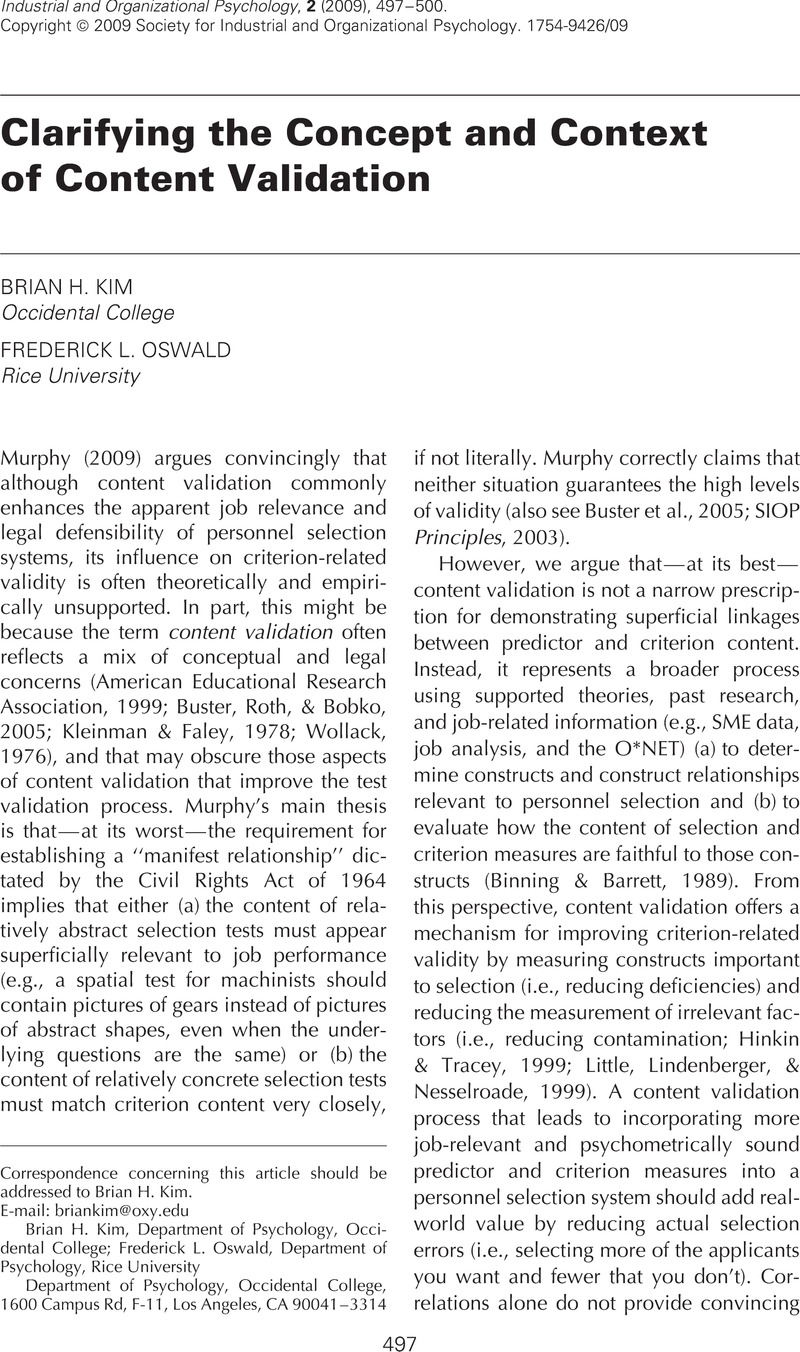Crossref Citations
This article has been cited by the following publications. This list is generated based on data provided by Crossref.
Murphy, Kevin R.
2009.
Is Content-Related Evidence Useful in Validating Selection Tests?.
Industrial and Organizational Psychology,
Vol. 2,
Issue. 4,
p.
517.





